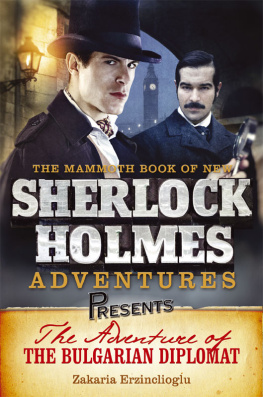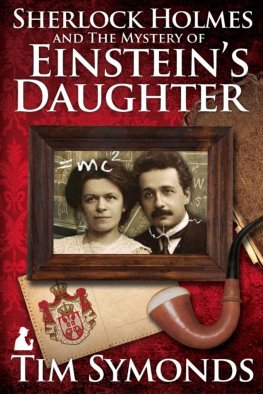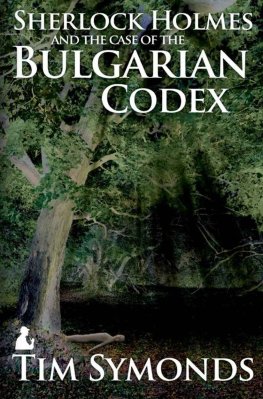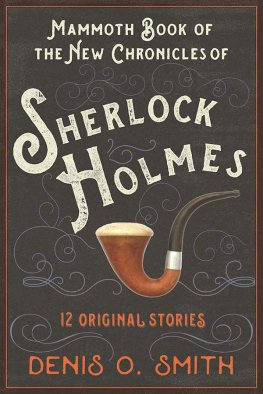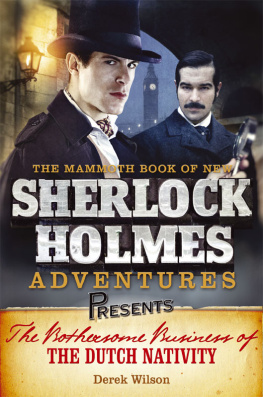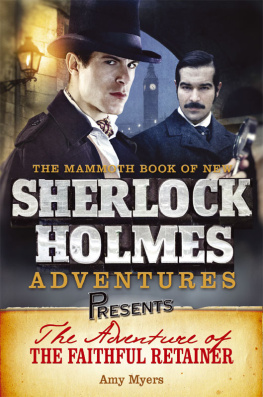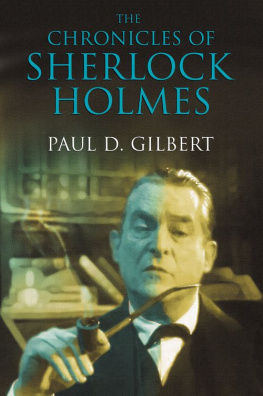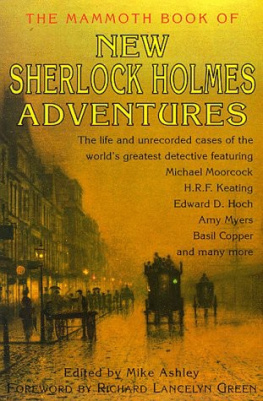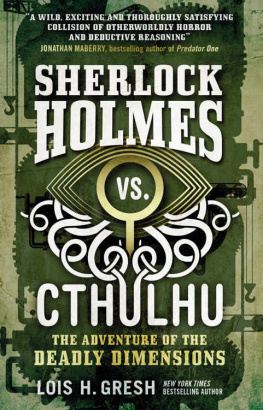Zakaria Erzinlioglu, The Adventure of the Bulgarian Diplomat. Dr Erzinlioglu (1951-2002) was, until his tragically early death from a heart attack, Britain's leading forensic entomologist, pioneering the relationship between insects and their maggots in dead human bodies. He called himself a maggotologist and he helped in the investigation of some 200 murders. He took Sherlock Holmess methods as his inspiration. He was formery Senior Research Associate at Cambridge University and subsequently the Director of the Forensic Science Research Centre at Durham University. His books include Maggots, Murder and Men and Every Contact Leaves a Trace(2001).
THE MAMMOTH BOOK OF
NEW
SHERLOCK
HOLMES
ADVENTURES
PRESENTS
The Adventure of
the Bulgarian Diplomat
Zakaria Erzinlioglu
Constable & Robinson Ltd
5556 Russell Square
London WC1B 4HP
www.constablerobinson.com
First published in the UK by Robinson,
an imprint of Constable & Robinson Ltd, 2012
The Adventure of the Bulgarian Diplomat Zakaria Erzinlioglu, 1997. First published in The Mammoth Book of New Sherlock Holmes Adventures, edited by Mike Ashley (Robinson, 1997). Original story, printed by permission of the Author's estate.
The right of Zakaria Erzinlioglu to be identified as the author of this work has been asserted by him in accordance with the Copyright, Designs and Patents Act 1988
All rights reserved. This book is sold subject to the condition that it shall not, by way of trade or otherwise, be lent, resold, hired out or otherwise circulated in any form of binding or cover other than that in which it is published and without a similar condition including this condition being imposed on the subsequent purchaser.
This is a work of fiction. Names, characters, places and incidents are either the product of the authors imagination or are used fictitiously, and any resemblance to actual persons, living or dead, or to actual events or locales is entirely coincidental.
A copy of the British Library Cataloguing in
Publication Data is available from the British Library
ISBN: 978-1-47210-073-3 (ebook)
Printed and bound in the UK
1 3 5 7 9 10 8 6 4 2
The Adventure of the Bulgarian Diplomat
Zakaria Erzinlioglu
1901 also saw the cases of The Priory School and Thor Bridge, whilst 1902 introduced us to Shoscombe Old Place, The Three Garridebs and The Illustrious Client. The year 1903 brings us to one of those great puzzles. The Blanched Soldier is a case recounted by Holmes himself, not Watson. Holmes was clearly in a begrudging mood when he wrote the case notes because he was rather vindictive about Watson having deserted him for a wife. It would seem that sometime towards the end of 1902 or early 1903 Watson married again, and Holmes felt rebuffed and neglected. In truth, however, Watson had not neglected Holmes. He was there all the time. Holmes just chose to write him completely out of the story of The Blanched Soldier by way of rather childish spite occasioned by Watsons marriage some years later when Holmes wrote up the notes.
During the course of the case Holmes mentioned that he had an urgent commission for the Sultan of Turkey that had to be dealt with. Thanks to the researches of Dr Zakaria Erzinlioglu, the eminent pathologist, who had access to certain papers in his home country, it has been possible to bring together the full facts of The Adventure of the Bulgarian Diplomat, and vindicate Watsons position once and for all. Holmes may have had one of the greatest brains we have ever witnessed, but at times he could be a cantankerous and awkward individual.
By the early years of the new century the extraordinary powers of Mr Sherlock Holmes had been put to many a severe test and his successes had brought him fame throughout the continent of Europe. Although many of those cases gave my friend great opportunities to demonstrate those deductive methods of reasoning by which he achieved such remarkable successes, yet no case involved a greater array of bizarre personalities and in none would the consequences, in the event of my friends failure, have been more horrific than in the case I am about to lay before the public for the first time. For reasons that will become clear to the reader of this narrative, it is only now possible to reveal the full facts of what must be considered one of the crowning points of my friends career.
It was on a cold and bitter evening in January, 1903, that my friend Mr Sherlock Holmes and I returned from a bracing walk to the rooms at Baker Street. We ascended the staircase in silence, for we were both frozen to the marrow, and a moment later were glad to find ourselves standing in front of a roaring fire in Holmess large and untidy room. We stood rubbing our hands before the grate and soon the warm blood was coursing through our veins. Holmes took one of his empty pipes and placed it between his teeth, then flung himself into the basket chair and picked up a large envelope that had been lying open on the table at his elbow. He removed the large, folded sheet of paper from its envelope and, spreading it out on his knee, began to read it quietly to himself with a frown of concentration on his face. As he did so, I could not help studying the envelope, which Holmes had replaced upon the table. It was of a cream colour and uncommonly large, but its most extraordinary feature was the design emblazoned across it. This was like a large and extremely intricate treble clef mark in gold, the body of the mark being made up of fine lines running back and forth along its length.
Well, Watson, said Holmes, who had been watching me furtively. What do you make of it?
I must say it is a most unusual envelope, Holmes, but I confess that I can infer nothing of interest from it, I replied.
Holmes rose from his seat and handed me the letter. It arrived by special courier this morning. You know my methods, Watson. Apply them.
I took the letter in one hand and the envelope in the other and started my examination. First, I looked closely at the envelope with its singular design. Following my friends methods I took up his magnifying lens from the table and examined the design minutely. I then sniffed at the envelope, as I have seen Holmes do on occasion. I then unfolded the letter and read aloud the contents:
Dear Mr Holmes,
I am commanded by my Sovereign to request your advice on a matter of extreme sensitivity. It is impossible for me to enter into the details of the problem in this letter, nor is it advisable for me to identify myself in writing. I will take the liberty of calling at your rooms this evening at 8 oclock to acquaint you with the case. Your esteemed brother Mycroft is already fully conversant with the relevant facts.
A case from a royal client! I cried, My dear Holmes, I congratulate you. Holmes waved a deprecating hand. Pray continue with your examination, he said.
I sat down and turned the letter over and over in my hands, examining it from every angle. I cudgelled my brains in an attempt to come to some inference about the significance of the letter or the character of the writer, but, try as I may, I could not arrive at any profound conclusion upon the subject. Nevertheless, I was determined to show Holmes that I was not totally devoid of ideas on the matter.
It would seem clear from the high quality of the paper and the envelope, I said, with some importance, and from the fact that he is writing on behalf of his sovereign that your correspondent is a man of high position. I would also say that he is a foreigner, judging by the peculiar symbol on the envelope and by the fact that he refers to my Sovereign. An Englishman would have written the King. Also, the use of the word esteemed in such a context strikes me as being distinctly un-English. I can find no further clues to the identity of the man.
Next page
